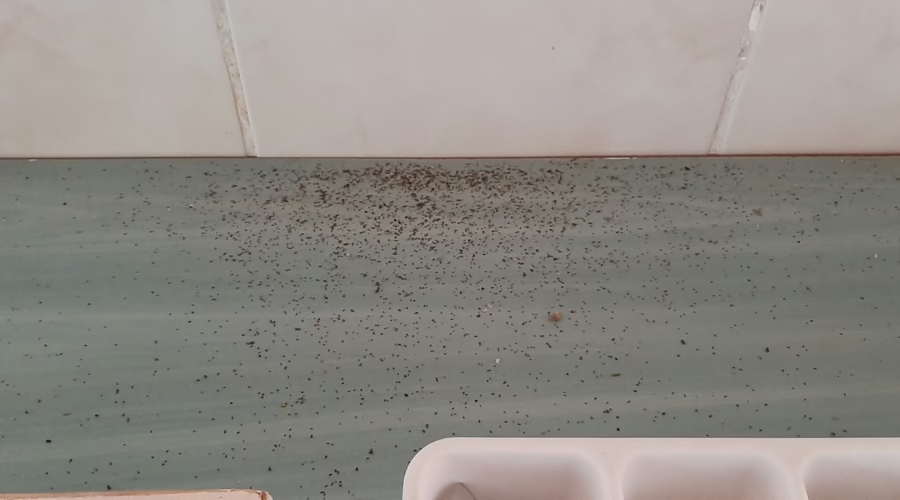Hazard in the Kitchen – When the Ceiling Becomes a Safety Threat
Introduction
Imagine preparing a meal in your kitchen, only to find debris falling from the ceiling onto your countertops, food, and stove. This isn’t just a nuisance—it’s a serious health and safety hazard. The debris depicted in this latest image raises troubling questions about structural safety, hygiene, and accountability for maintaining habitable living conditions.
The Problem: Debris in the Kitchen
Falling debris from a ceiling is a symptom of underlying issues that must be addressed urgently. This situation poses several dangers:
- Health Risks
- Contamination of food and cooking surfaces with potentially hazardous particles.
- Risk of exposure to harmful substances, such as mold spores, asbestos, or lead, if these materials are present in the debris.
- Safety Concerns
- Increased risk of injury from larger pieces of debris or a potential ceiling collapse.
- Fire hazards if debris falls onto a lit stove or electrical appliances.
- Emotional and Psychological Impact
- Living with constant fear of debris falling undermines a sense of safety and security in one’s home.
Legal Obligations for Property Maintenance
South African law provides clear guidance on the responsibilities of property owners and municipalities to address such hazards:
- Rental Housing Act (1999)
- Section 4(5)(c) mandates landlords to provide and maintain properties in a habitable condition, ensuring that they are safe and structurally sound.
- National Building Regulations and Building Standards Act (1977)
- Regulation A13 requires that ceilings and their supports are securely installed and maintained to prevent hazards such as falling debris.
- National Health Act (2003)
- Local authorities are obligated to investigate complaints of housing conditions that endanger health and enforce remedial actions.
- Occupational Health and Safety Act (1993)
- Ensures that all buildings meet minimum safety standards to protect occupants from physical harm.
Responsibilities of Municipalities and Property Owners
When falling debris is reported, it is incumbent upon property owners and municipal authorities to act swiftly:
- Inspection and Risk Assessment: Authorities must inspect the property to identify the cause of the falling debris and assess the extent of the hazard.
- Remedial Action: Property owners are required to repair or replace damaged ceilings to prevent further incidents. Municipalities must enforce these repairs under health and safety bylaws.
- Accountability: Failure to address the issue can lead to legal repercussions, fines, or even property condemnation.
Occupants’ Rights
Occupants have several avenues to seek redress when living conditions deteriorate to this extent:
- File Complaints:
- Report the issue to the landlord in writing, including photographic evidence. If the landlord fails to act, escalate the complaint to the municipal health department.
- Seek Legal Relief:
- Approach a housing tribunal or court for relief under the Promotion of Administrative Justice Act (2000) to compel action from the responsible parties.
- Make the Issue Public:
- In cases where official channels fail to yield results, sharing the issue in public forums helps raise awareness and mobilize community support.
The Bigger Picture: A System in Decline
Falling debris in a kitchen isn’t just a one-off issue; it is symptomatic of a broader failure to prioritize property maintenance and occupant safety. It signals neglect by landlords, lack of enforcement by municipalities, and an overall disregard for the well-being of residents.
When living conditions deteriorate to this level, it is a stark reminder of the need for transparency, accountability, and swift intervention by all parties involved.
Conclusion
No one should have to live in a home where debris falls onto their food, countertops, or stove. This is not just a question of comfort but of basic human dignity, safety, and health. It is imperative for landlords and municipalities to take responsibility, comply with legal standards, and restore habitable conditions for their tenants.
Legal Context for the Right to Publish
This article is published under Section 16 of the Constitution of South Africa (1996), guaranteeing freedom of expression and the right to impart and receive information. The Promotion of Access to Information Act (2000) and the Open Justice Principle further reinforce the public’s right to highlight and expose hazardous living conditions.


